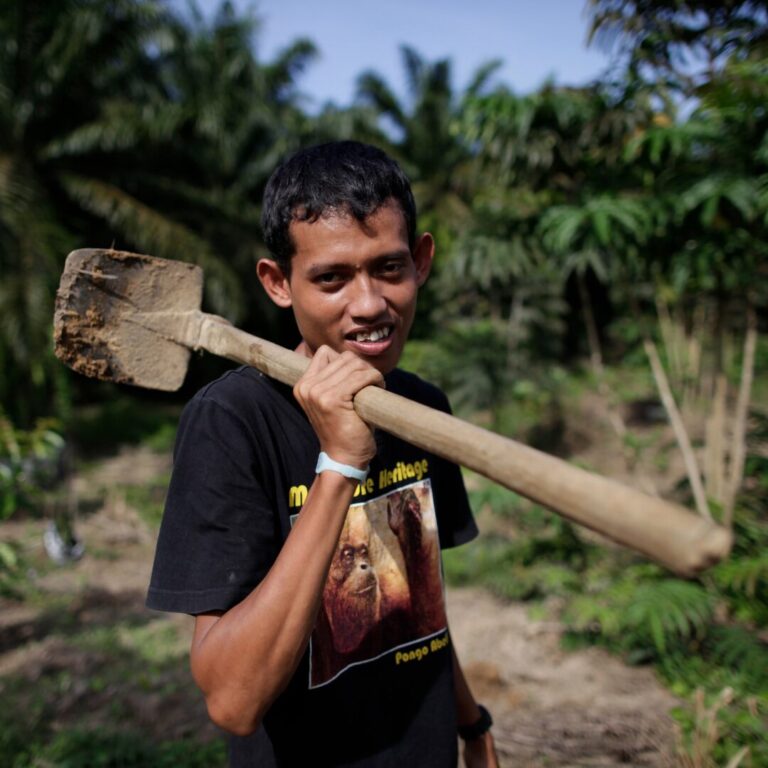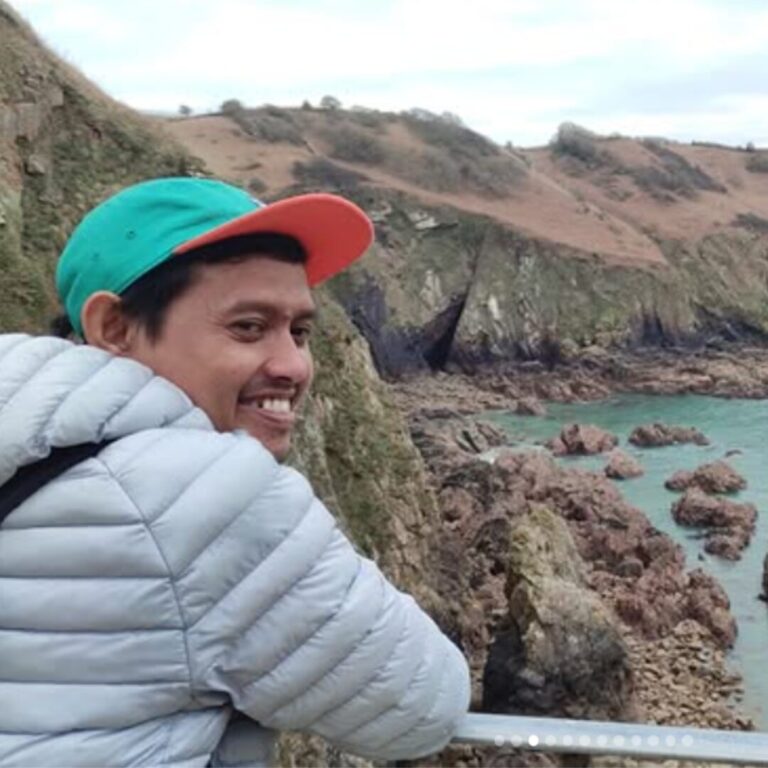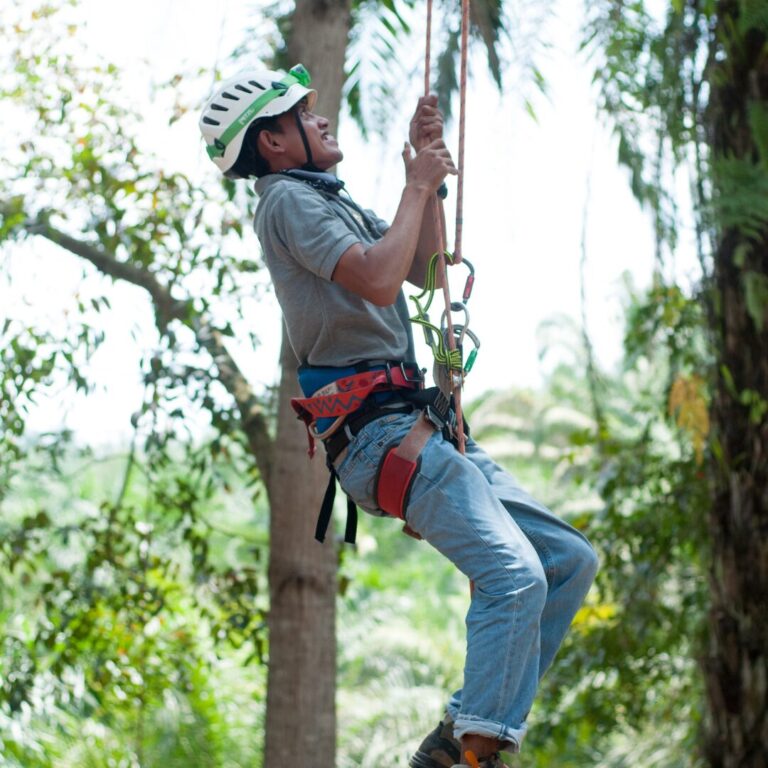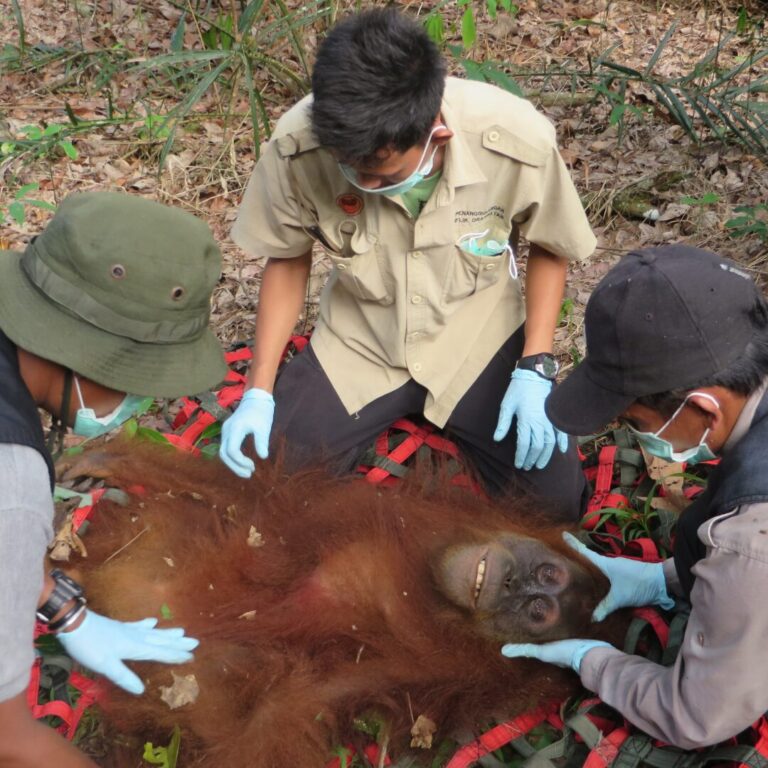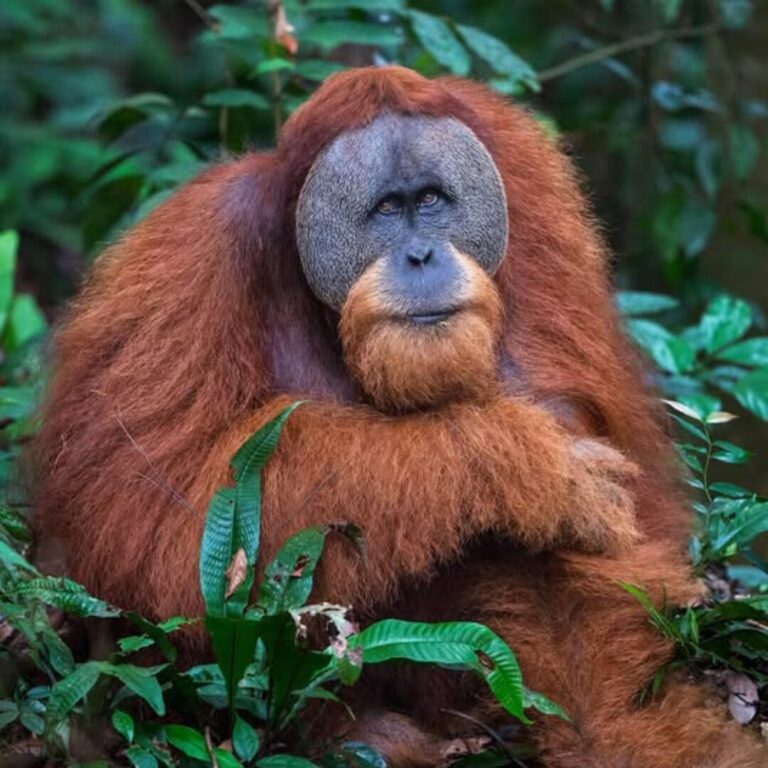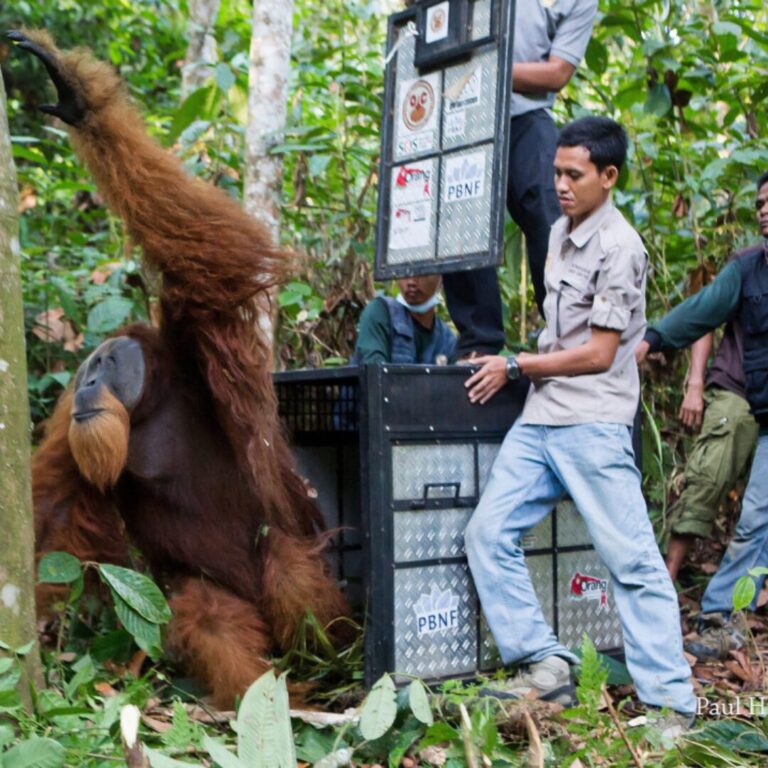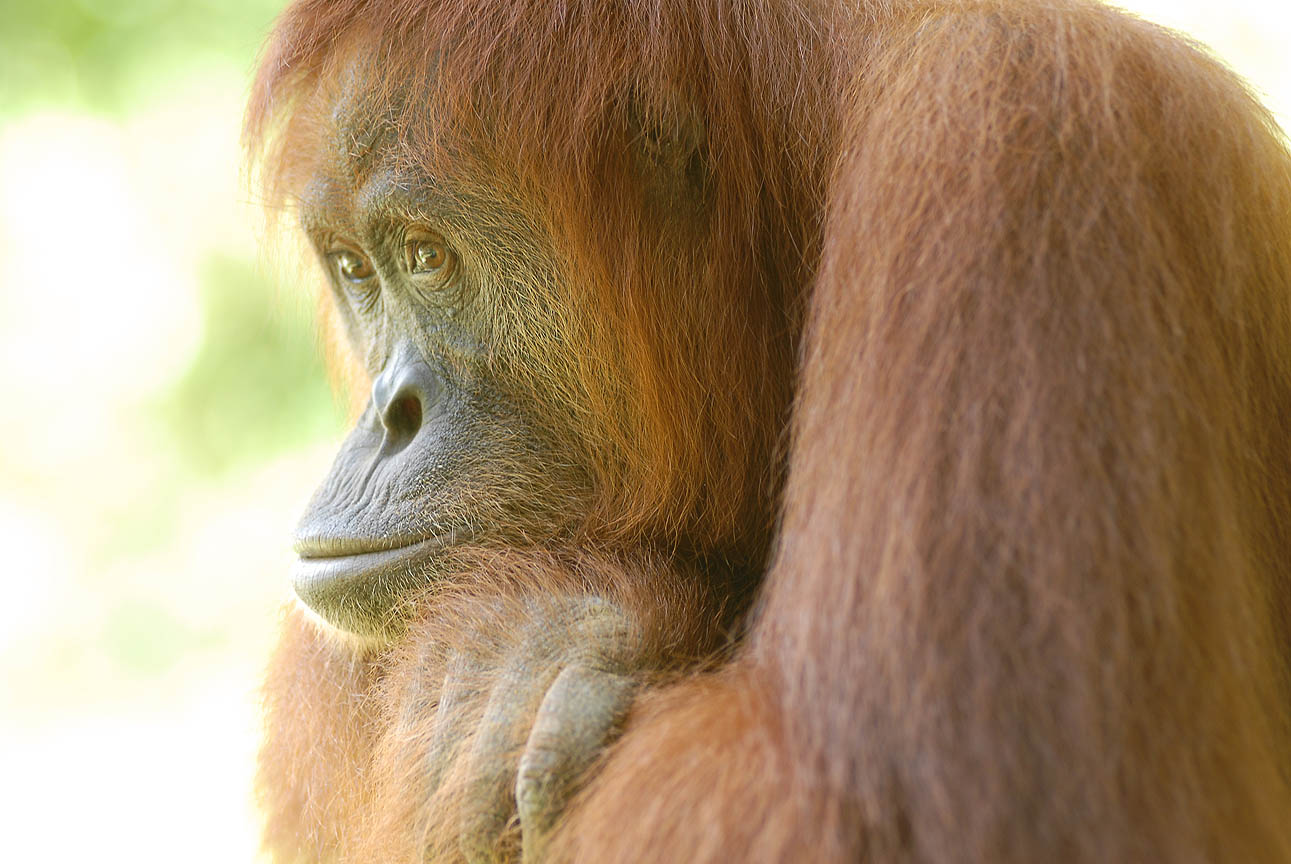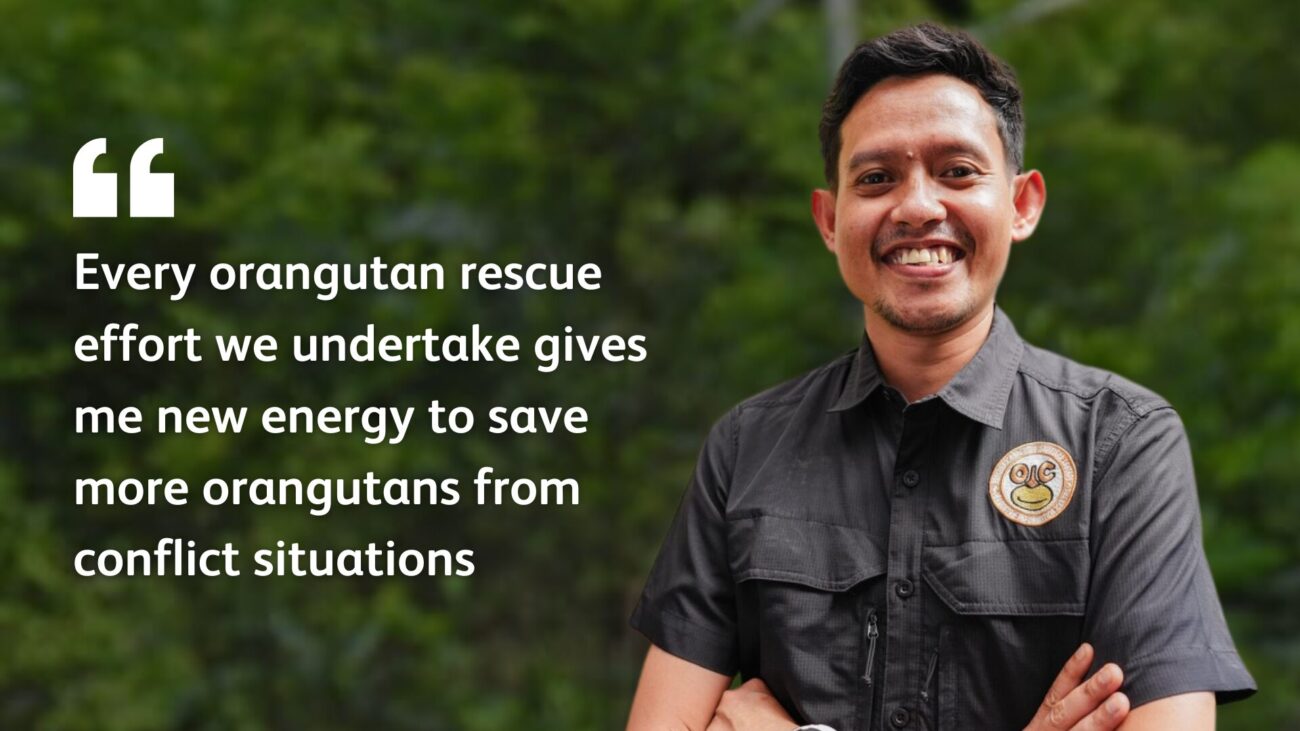
As part of the Orangutan Information Centre (OIC) team – our frontline partners – Krisna patrols the landscape locating and helping orangutans in distress.
Krisna and the Human Orangutan Conflict Response Unit (HOCRU) team tackle the fundamental drivers of human-orangutan conflict, by equipping local people with the knowledge and skills needed to build a peaceful coexistence with orangutans and other vulnerable wildlife.
We are thrilled to support Krisna in the next steps of his career, by funding a scholarship for the Durrell Endangered Species Management Graduate Certificate (DESMAN). For three months, Krisna traded the dense Sumatran rainforest for the rugged cliffs and rolling sand dunes of Jersey. We had the pleasure of catching up with Krisna as the course came to an end.
This scholarship was made possible thanks to the generous support of our donors. Please consider donating to SOS to support frontline conservationists like Krisna, and build a thriving future for wild orangutans.
I started my career at the Orangutan Information Centre in 2008. At the time, OIC had a restoration project in my village, Halaban. I started as a volunteer and then joined the Human Orangutan Conflict Response Unit (HOCRU) when it formed in 2010.
In 2022, I was entrusted with managing the HOCRU programme which has four teams spread across two landscapes – Leuser and Batang Toru. Our task is to help the government and communities to minimise the negative impacts of human-orangutan conflict.
I started my career from the bottom and learned from the people and experiences I’ve had on the way. It’s been challenging spending so much time in the field; I’ve had little time with my wife and children. But thankfully, I receive full support from my loved ones.
I am proud as a local community member to contribute to saving orangutans, which are charismatic Indonesian animals. Every orangutan rescue effort we undertake gives me new energy to save more orangutans from conflict situations.
I took the DESMAN course to learn the theory and practice of endangered species recovery, and to be trained in management, facilitation and leadership. These skills are essential to successfully navigate the complex landscape of conservation projects. I hope to use the course to enhance my effectiveness in conservation management, and therefore the impact we can have in safeguarding orangutans and their ecosystems.
The three-month course was very intense, but fascinating! We covered everything from wildlife translocation, to breeding programmes, to measuring and analysing conservation success. In particular, I enjoyed the three-day practical field experience, following the daily lives of the animal keepers in the orangutan enclosure at Jersey Zoo. This was deeply moving for me.
I saw that the animals in the enclosure were well cared for, known as individuals, and provided with enrichment to encourage them to play and explore. The food was varied to meet their nutritional needs, and placed high and low to encourage the orangutans to eat, rest and play as they would in the wild. The orangutans could express natural behaviours, such as nest-building, and the branches and leaves in the enrichment areas were used for both play and as natural food for the orangutans.
I will apply this experience to my team and our own rehabilitation centre in Sumatra, which we have been building for the past five years. Currently, our centre houses orangutans, gibbons, siamangs and sun bears. Since it is fairly new, it’s crucial for us to understand daily animal care, health checks, enclosure enrichment, food patterns and islands for orangutan forest schools.
Yes – wildlife translocation. The DESMAN course significantly changed my perspective on how to translocate wild animals, especially orangutans. It is essential to be cautious during the translocation process. There are many steps to be taken, from preparing a new habitat that is safe for the animal and far from human activity, to assessing the carrying capacity of the new habitat and competition with native animals.
I’ve used the teaching from this course to draft a new project proposal, which will help determine the success rate of orangutan translocations. This project has the potential to become a model for orangutan rescue and translocation efforts, helping us assess the survival and behaviour of orangutans post-release.
Orangutans need urgent attention from all corners of the world to help them survive in the tropical rainforests of Sumatra. Currently, the biggest challenge faced by orangutans is human intolerance towards their presence.
In Sumatra, orangutans are still considered a pest by most farmers. This triggers conflict between humans and orangutans. Local people can suffer economic losses as crops are eaten or damaged by orangutans and – in the worst case – orangutans can be killed.
Additionally, the conversion of forest into agricultural land poses a serious challenge to the future survival of orangutans. We need alternative conservation approaches – like those adopted by SOS and OIC – to build a harmonious existence between people and wildlife.
When I’m back in Indonesia, I will adapt what I’ve learned to advance the HOCRU team. We will conduct extensive education within communities and schools, to help build conflict-independent villages and continue to monitor orangutans in conflict-prone villages.
It is my hope that humans and orangutans can live in harmony and evacuation will become the last option taken by the HOCRU team. Thank you Sumatran Orangutan Society (SOS) for supporting HOCRU’s existence for the past 15 years.
You can help protect Sumatra's Orangutans. Click to get updates
